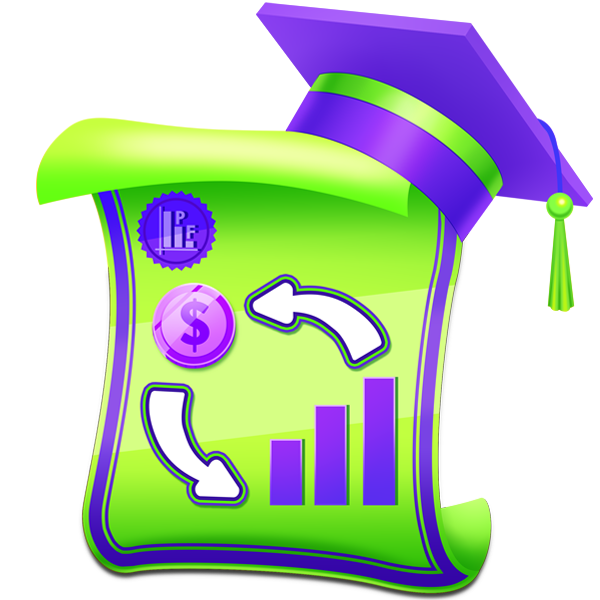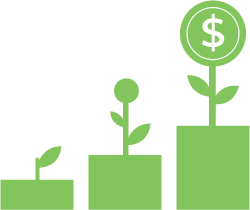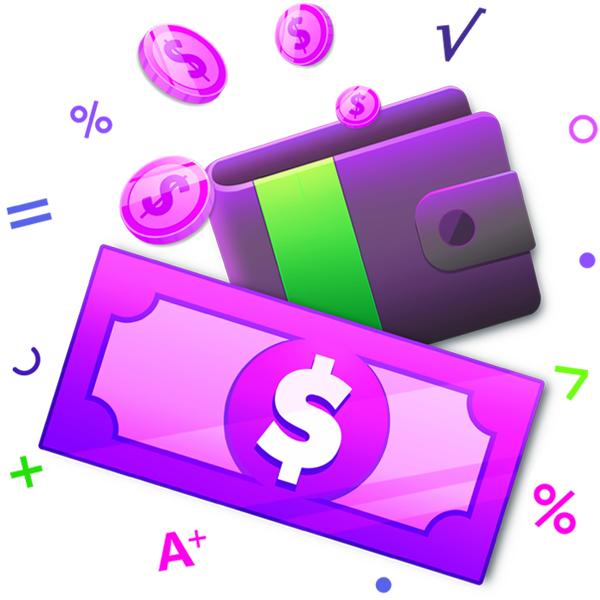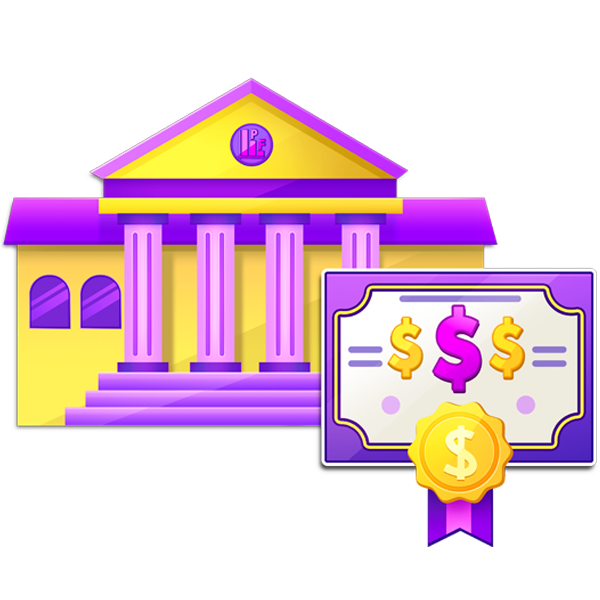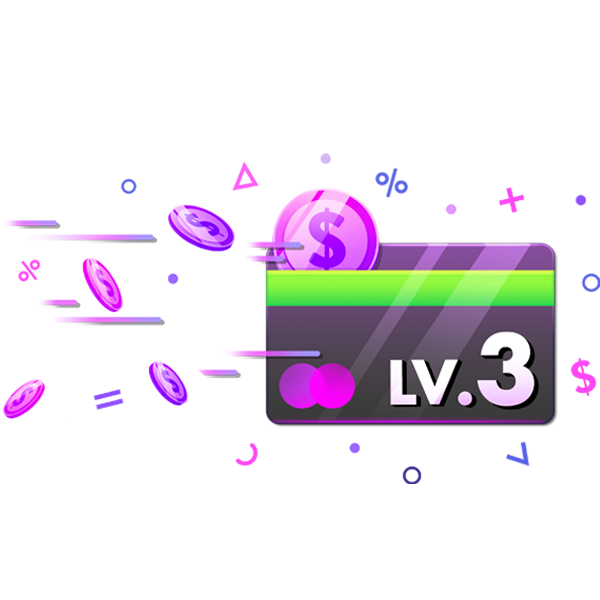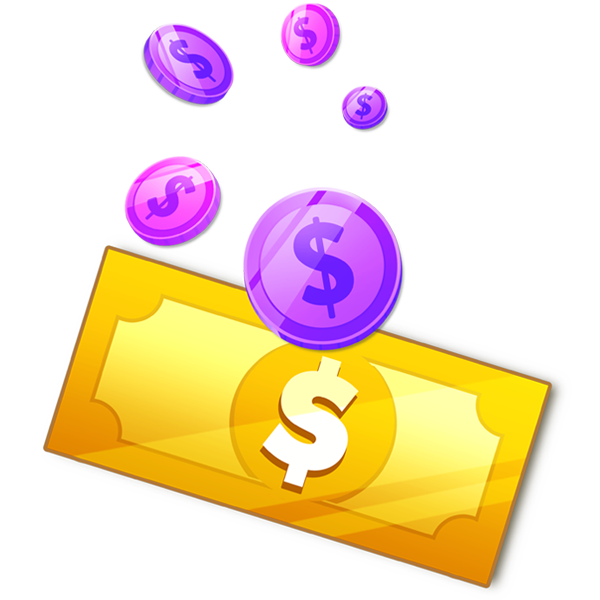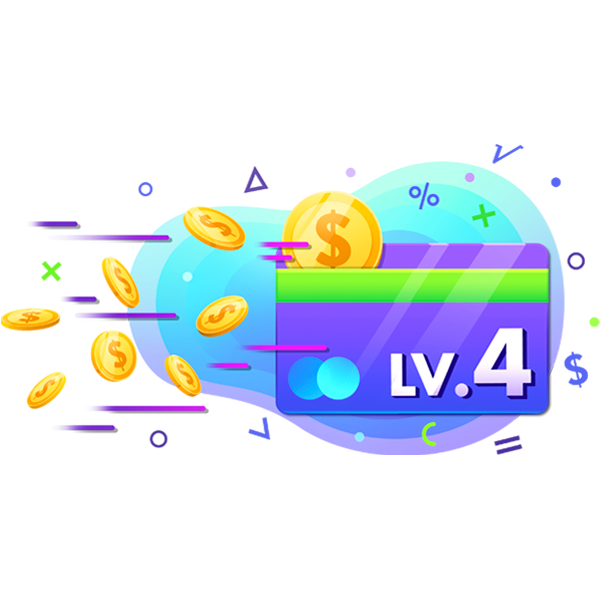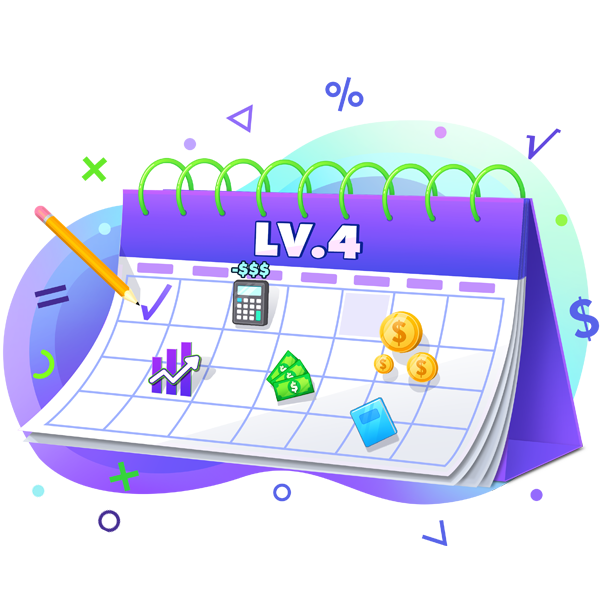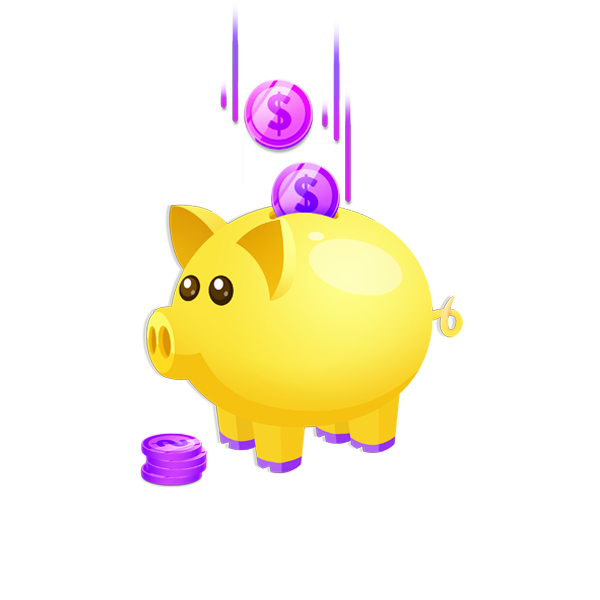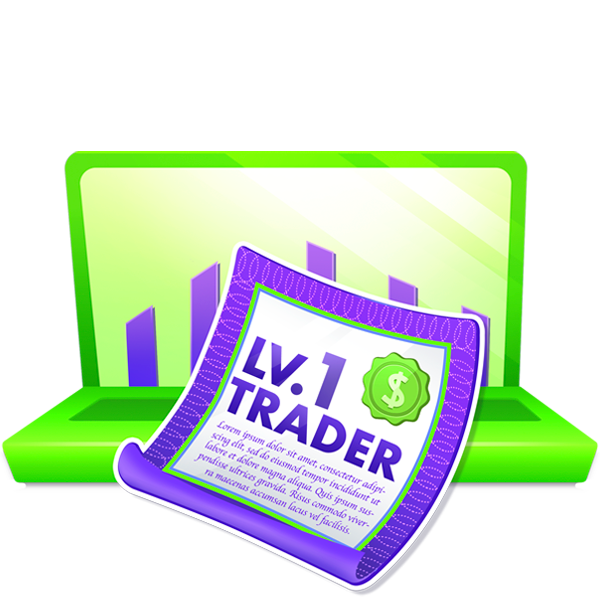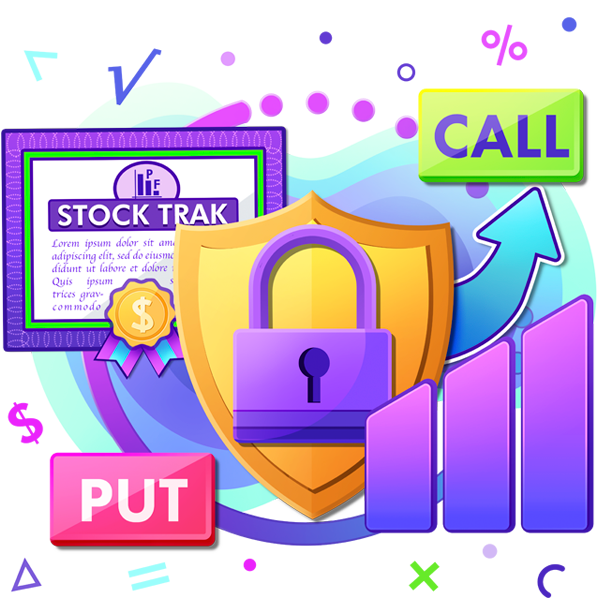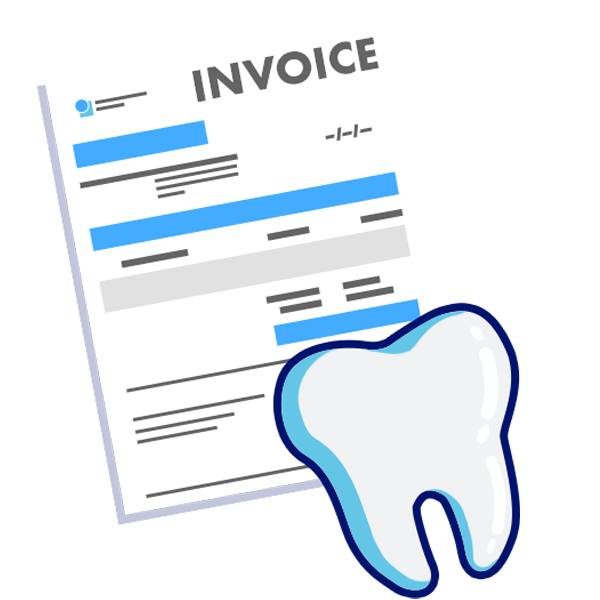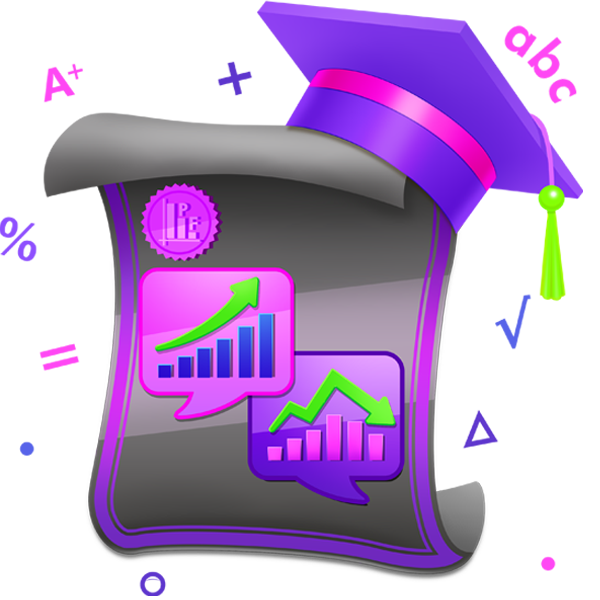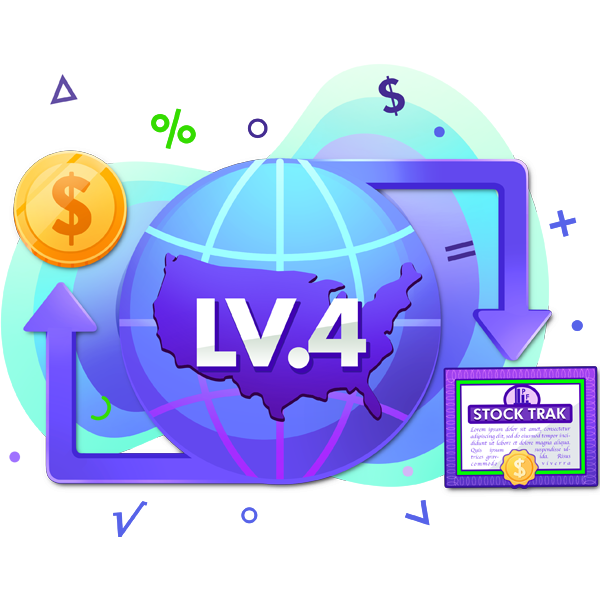Public Good A resource that exists for the good of the general public, rather than a specific individual. Public water and roads are examples of public goods.
Public Company A type of company that has publicly traded shares available on a stock exchange. Public companies are typically larger than private companies but have very strict financial reporting requirements. Click Here for our lesson on Stocks
Psychographic Segmentation The act of a marketer to divide their target audience based on how different types of people make buying decisions. This can include marketing differently to people with different lifestyles, economic status, or religions.
Property Tax A type of tax applied to the value of land and businesses. Property tax is most frequently used by local governments to fund operations and schools. Click Here for our lesson on Taxation Overview
Property Lien A restriction a creditor can place on property owned by a borrower, which prevents that property from being sold without the creditor’s permission. If the property is sold (with permission), the creditor gets cash from the sale first to pay off any loans. Click Here for our lesson on Managing Debt
Progressive Tax A type of tax that has a higher tax rate the higher income a person receives. For example, income tax in the United States is progressive – a person earning $1 million per year will pay a greater percentage of their total income in taxes than a person earning $100,000 per year. Click Read More…
Program Logic Model A document frequently used by non-profit organizations and governments to explain what a program is trying to accomplish, how, and what benchmarks will be used to determine success (or failure). A Program Logic Model is both used to pitch a new program to potential funders, and as a guide on how the Read More…
Profitability A measure of how profitable a company is over time. This can be expressed as total profit divided by total sales, total profit divided by the amount that was invested in a business, or several other measures depending on what an analyst is most interested in.
Profit The amount of revenue earned by a company over a certain period minus their total costs.
Profit Sharing A type of compensation package where a portion of the profits of a business are distributed to the workforce to boost morale and increase productivity.
Profit Maximization An idea in business philosophy that a publicly traded company’s primary concern is to maximize the total profit as their duty to their shareholders. Other concepts, like including ideas of social responsibility, are becoming more common in the business landscape today.
Productivity A measurement of the economic output of a person or economy divided by the total number of hours worked. This is a measurement of how efficient workers are, and how effectively they are at leveraging technology.
Product Lifecycle The timeline of a typical product in the open market. It usually starts with introduction and rapid growth, the introduction of competitors, maturity where total demand starts to stabilize, and a decline where demand decreases as customers find newer and better products. The lifecycle can be extended or reset through continual product innovations.
Product Innovation The act of a business to actively analyze their products and how well they are meeting the needs of their target customers and find ways to improve the product to better reach those needs or reach new segments of customers. This is an act of making things that the market wants more than Read More…
Product Differentiation A competitive strategy for businesses to add features or benefits to their product that the competition does not have. This can be new features on a phone, a different taste of a beverage, or any number of things. In other words, this is what makes the products offered by different sellers different from Read More…
Producer Surplus An economic concept that measures how much benefit a producer or seller of a good or service gets from selling at a specific price and quantity. This is slightly different from profit, because it includes saved theoretical costs if they were to produce a lower quantity than they actually do.
Producer Price Index (PPI) An economic measure that looks at how much raw input prices and salaries increase from year to year. The PPI is not usually used to measure total economic inflation, but an increase in PPI is usually a sign that the prices of finished goods and services is about to go up.
Process Innovation The act of a business to actively analyze how they operate or produce a good or service and find ways to produce more of the same thing more efficiently. Process innovation focuses on cutting costs without sacrificing quality.
Private Company A type of company that is owned by individual investors and is not traded on a stock exchange. Private companies do not need to publicly disclose any financial information to the public.
Prior Authorization A concept in health insurance where an insured person may be required to get permission from their health insurance provider before getting some medical procedure, otherwise the insurance company will not cover the cost. Seeking prior authorization gives the insurance company the chance to identify if they have some other provider in their Read More…
Principal The initial amount borrowed on a loan. Related Lessons
Price War A form of competition where two or more competitors begin to consistently lower the price below the competition to attract price-sensitive buyers. Consumers usually love price wars, as it lowers the cost of these goods. Sellers usually engage in price wars to get the price of the good so low that their competition Read More…
Price Floor An artificial price limitation that specifies a lowest price a product can be sold for on the market. This is done to protect the producers of this product against temporary market price drops that could force some sellers into bankruptcy, hurting long-term competition. Milk usually has a price floor – the government specifies Read More…
Price Elasticity An economic measurement of how much the quantity supplied or demanded of a good changes when the price of that good changes. Goods with low price elasticity are considered “essentials” (people need to buy it regardless of the price). Goods with high price elasticity are considered “luxuries” (the amount bought and sold depends Read More…
Price Controls The act of a government placing a maximum or minimum price on a good or service, either as a consumer or producer protection.
Price Ceiling An artificial price limitation that specifies that no seller can sell this good or service above a certain dollar amount. This is typically put in place as a consumer protection. Price ceilings usually forces the price of the good or service to be below the equilibrium price, and so often results in shortages. Read More…
Present Value The value of an investment today, given that it will grow in value (or have interest payments) in the future. The present value is found by discounting the future growth by some interest rate, so it can be expressed in today’s dollars and compared with other investments.
Pre-Paid Debit Card Originally a type of gift card, this is a medium of exchange that can be pre-loaded with value by paying cash at a store or other vendor to “load” the card, which can then be spent anywhere debit cards are accepted. Pre-Paid debit cards can be used to give gift cards that Read More…
Premium The amount paid above the par value of a bond. A premium would be paid if a bond has better-than-average interest rates, and the investor is willing to pay more now to get those future payments. Click Here for our lesson on Bonds
Preferred Stock A classification of stock that is consistently paid higher and more frequent dividends. While preferred stock also represents a share of ownership of a business, it does not have voting rights at shareholder meetings. Preferred stock is usually owned by a company’s founders or very early investors. Click Here for our lesson on Read More…
Precomputed Interest A type of loan that has the total interest payments outlined explicitly in the terms of the loan. With other types of loans, a borrower can make additional payments to pay off the loan sooner to lower the total interest paid over the life of the loan, but this is not possible with Read More…
Precious Metal A type of metal that is bought and sold by investors based on its intrinsic value, rather than the ability for the metal to be used in production of some other good. Silver, gold, and platinum are considered precious metals.
Positive Externality The result of some economic activity that produces benefits greater than what is reflected in the price of that good or service. For example, offering after school sports programs usually also decreases crime in a neighborhood, which is a benefit that cannot be charged for in the price of the class. Governments often Read More…
Portfolio A mix of investment assets that makes up the total investments of a person or business. This can include stocks, bonds, derivatives, commodities, properties, and anything else held as an investment. Related Lesson
Policy Owner The person or business that is protected by an insurance policy.
PMI Private Mortgage Insurance – this is a type of insurance policy that protects a bank that issues a person a mortgage loan against the loss if the person defaults on their loan. If the borrower fails to pay back their loan, the bank can seize and sell off the house or other property. If Read More…
PLUS Loans A type of student loan that is offered to the parents of students. A PLUS loan allows a parent to fund their child’s education and take on the debt of the student loan themselves, instead of by the student. This enables the student to finish school with less total debt. Click Here for Read More…
Physical Asset A type of asset that can theoretically be sold for cash. Physical assets include cash, properties, inventories, and equipment.
Peter Lynch A famous investor and former manager of the Magellan Fund at Fidelity Investments, which was consistently one of the top performing funds in the world. Peter Lynch emphasized looking at a stock’s price compared to the potential for the company to grow its earnings over time as a strong reason to buy (or Read More…
Personal Selling The one-on-one act of a salesperson engaging with a potential customer to sell them a specific product or service. Personal selling is different than mass marketing and is tailored explicitly to the person being sold to.
Personal Property The assets owned by a person. This can include small things like clothes and shoes, or big things like houses and bank accounts.
Personal Injury Protection A type of liability insurance most frequently found in car insurance that covers the health expenses of people injured in an accident without health insurance. Personal Injury Protection is usually only offered in “no fault” states, where legal regulation states that no single person is “at fault” for an accident.
Personal Debt The debt held by a person that is attributable only to that person. Personal debt is different from business debt, which is debt owned by a business or company, and has some difference in bankruptcy rules. Click Here for our lesson on Managing Debt
Personal Budget A budget to manage one’s personal finances over a period of time. Related Lessons
Per Capital GDP The Gross Domestic Product of a country or economy, divided by the population. The Per Capita GDP allows economists to compare the relative economic input across differently sized countries to determine which country is wealthier for each citizen.
Pension A retirement benefit where an employer pays out monthly payments to a person who has retired from their company for the rest of that person’s life. Retirement benefits are usually paid out of separate retirement accounts that are invested in a business.
Penny Stocks Stocks with a very low price, typically below $3 or $5. These stocks are typically for companies performing very poorly and could be on the verge of bankruptcy. Penny stocks are frequently the targets of scams, where fraudulent investors buy up penny stocks, try to get other people interested in the company with Read More…
Peer Pressure A social phenomenon where encouragement of one’s friends or similarly aged group of people can heavily influence one’s behavior. Peer Pressure does not necessarily mean that friends are ganging up to insist that you take a certain action but can also be subtle expectations of certain types of behavior to better “fit in”.
PE Ratio The “Price to Earnings” ratio, which measures the stock’s price divided by the net profit of that business for the last year, divided by the total number of shares. The PE ratio is one way to compare stocks – which stock costs less relative to the profit of the business?
Payroll Employment An employment arrangement where a person is a legal employee of their employer. This mandates the employer provide certain minimum working conditions, minimum wages, and withhold income taxes on the employee’s behalf. Payroll Employment is the opposite of working as a contractor. Click Here for our lesson on Employer and Employee Rights and Read More…
Payment Plan An arrangement made with a creditor to pay back a loan with different terms than normally agreed upon. An example would be a person who falls behind on their rent coming to an agreement to make partial payments every 2 weeks until caught up, with the landlord waiving all late fees. Creditors usually Read More…
Payday Loan A type of loan with a very short term, usually due to be repaid within one or two weeks of being issued (on the day the borrower gets their next paycheck). Payday loans typically have extremely high interest rates and are a factor in trapping a person in a cycle of poverty. Related Read More…
Paycheck A check that is given to an employee in exchange for work performed. The paycheck can be deposited in a bank account. It also usually includes a Pay Stub, which outlines the hours that were worked, and the cash withheld from this paycheck to pay income taxes.
Pay Yourself First A savings strategy where a person takes money from their income and puts it into savings first, before paying any other bills or expenses. Pay Yourself First typically results in healthier financial habits and stronger savings than a “save what is left over” savings strategy. Click Here for our lesson on Pay Read More…
Passive Investing A type of investment strategy that does not focus on constant monitoring of the investment portfolio. Passive investing relies on long-term buy-and-hold investing strategies. Related Lessons
Partnership A type of business that is jointly owned by two or more people, with the owners being directly liable for the business itself (the business is not a separate legal entity from its owners).
Pareto Optimal An economic concept where no change in the allocation of resources can make someone better off without making someone else worse off. It is important to note that Pareto Optimal does not mean “fair”.
Pareto Improvement An economic concept where the allocation of resources is changed so at least one person is made better off without making anyone else worse off.
Paper Asset A paper asset can mean one of two things. In accounting and management, a “paper asset” is something that has value to a company and may appear on financial statements but is extremely hard to convert into cash (like “goodwill”). In Investments, a paper asset is an asset that exists on paper but Read More…
Overtime Pay Labor laws and employment contracts specify a limit to the number of hours an employee should be working per week. If the employer requires that employee to work more hours than specified, there is generally a significant increase in the hourly rate of that work.
Overhead Ratio A measurement of a company’s cost of doing business against their total revenues. These are costs that cannot be directly associated to a single sale (like administration fees, management salaries, etc.). Generally speaking, a lower overhead ratio is preferred.
Overdraft A feature offered by many banks to allow users to spend more money than they currently have in their bank account, but with overage charges and interest fees. Overdraft is becoming less commonly offered, as many consumer protection groups argue that it places even greater financing charges on those who can least afford it Read More…
Over The Counter A type of transaction that does not take place in an organized and fully regulated exchange. While “OTC” markets do exist, they do not have the same stringent reporting and regulatory compliance requirements as a main stock exchange.
Over Diversification An investing concept where a portfolio with too many holdings will not be able to take advantage of the price movements of any one of its holdings, making it difficult to out-perform the market as a whole. Click Here for our lesson on Building a Diversified Portfolio
Outsourcing The act of taking some element of a company’s operations and hiring a separate company or contractor to fulfill that role. Outsourcing can mean hiring expert consultants to work on a specific project or moving an entire production plant to a different country with lower labor costs.
Out-Of-Pocket Maximum A health insurance term that specifies the maximum amount of cash an insured person can pay over the course of 1 year. If medical care exceeds the out-of-pocket maximum, the insurance company covers 100% of the cost above that point. Click Here for our lesson on Health Insurance
Out-Of-Network A health insurance term to refer to a medical care provider that does not already have pre-arranged agreements in place with a health insurance provider. This usually makes it much more expensive for the insurer to pay for any care, and so less (and more expensive) coverage is available. Click Here for our lesson Read More…
Order Term The length of time a limit or stop order should try to fill before it automatically cancels. Popular order terms are Day (lasts for 1 day), Date (lasts until a specific calendar date), or Cancel (it stays open forever, until it either executes or it is manually cancelled by the person who placed Read More…
Order Book A complete ledger of all buys and sell orders for a stock or other investment instrument, showing how many shares, bid price, and ask price. The order book logs who is trading at what prices.
Options A financial instrument that gives an investor the right, but not the obligation, to buy or sell an underlying stock or other asset at a specific price by a specific date. Options are frequently used to protect against risks in a stock’s price rapidly rising or falling. Click Here for the Investing101 Chapter on Read More…
Opportunity Cost An economic concept that every choice you make means there are other choices you did not make. An example is that if you spend $5 on a cup of coffee, you cannot also spend that $5 on a sandwich, or invest it for later.
Operational Planning A management exercise that analyzes how an organization currently operates – what business units exist, what are people’s jobs, and how does information flow through a company. Operational planning focuses on improving these structures to turn a company into a well-oiled machine.
Operating Revenue The income of a business incurred while “doing what they do” as a company. An example of a operating income would be the revenue a shop earns from selling products. If a company were to sell stock to investors to raise cash, this income would NOT be considered operating income.
Operating Margin The revenue a business earns as part of its operating activities divided by the expenses incurred as part of their operating activities. The “Operating Margin” is frequently used by analysis to determine how profitable a business, while filtering out distorting income or expenses that are not considered a “normal” part of how they Read More…
Operating Expenses The expense of a business incurred while “doing what they do” as a company. An example of an operating expense would be paying salaries to employees. If a company is paying back a long-term loan, this expense would NOT be considered an operating expense.
Operating Activities The activities of a business that is considered to be “doing what they do” as a company. Operating Activities are distinguished from Investing Activities on financial statement. An example may be that a car dealership with a huge parking lot sells part of their parking lot to another business. While they earned income Read More…
Market Open The time of day when a stock market allows trading to begin. Before the Market Open, no orders may execute. Because investors are trying to react to news that may have happened overnight, the Market Open is typically when the biggest price swings occur.
Offer (Contract) A part of a contract that specifies what each party is offering the other as part of the exchange. An example would be the money being offered in exchange for hours worked. Click Here for our lesson on Contracts
Non-Spending Alternatives A personal finance concept where a person should evaluate options to complete a task that do not require spending money. An example would be cooking dinner at home instead of eating out or learning a skill instead of hiring a professional.
Non-Profit Organization A type of mission-based organization that specifically does not aim to retain a profit each year. These are almost always charitable organizations and have certain tax advantages but are highly restricted in how they can fundraise and retain cash from one year to another.
Non-Monetary Assets Types of assets that cannot be quickly converted into cash and spent. This does not mean they have no value, but it means that there is more work involved to sell them before the assets can be spent.
Nominal Interest Rate The published interest rate for a loan. Because prices tend to increase over time, many analyses will subtract inflation from the interest rate of long-term loans to find a “real” interest rate.
Nominal GDP The Gross Domestic Product from a given year, without taking inflation into consideration. Economists typically will not compare Nominal GDP over time, but instead will adjust the figures to account for inflation (becoming Real GDP). Click Here for our lesson on What Are Interest Rates?
No Fault A concept in liability insurance where neither party involved in an accident is considered to be “at fault” for the damage, so both sides either cancel the payments or pay back equally.
Niche A small, specialized subset of a market. For example, while there are hundreds of book publishers in the world, Harlequin Books targets a niche market specifically marketing romance novels to female readers.
New York Stock Exchange A stock exchange based in New York City. This is the largest stock exchange in the world, both by the value of companies in it and the number of trades executed per day. Click Here for our lesson on What is the New York Stock Exchange?
Net Worth A person or family’s total assets minus their total liabilities
Net Present Value The discounted value of a series of future payments in today’s terms, discounted by some interest rate. An example of Net Present Value would be if someone owes you money – they will pay you back $10 per week for 1 year. After 1 year, you would get $520, but perhaps you Read More…
Net Margin The Net Income of a business divided by Total Sales. The Net Margin represents how much of a company’s income is retained as profit.
Net Income The total income of a business, minus its total expenses. Net Income is another way of saying “Profit”, but with specific regulatory definitions of income and expenses.
Negative Externality A type of result from a current allocation of resources that causes some harm or damage, which cannot be easily reflected in the price of goods or services. For example, pollution caused by a factory would be a negative externality. Governments usually apply penalizing taxes to activities with negative externalities to try to Read More…
Needs Analysis A type of analysis that seeks to understand what the current “need” is for a product or service in the market, and analyzing what alternatives are currently being offered to address that need. The Needs Analysis seeks to identify the gap between what is needed and what is being offered and use that Read More…
Needs A type of expense that a person MUST purchase. Needs include basics like shelter and food, but can also include contractual expenses, like repayment of loans.
Net Asset Value (NAV) A term that is used to measure the total value of the holdings in a mutual fund or ETF, based on the value of all the assets owned by that fund.
Natural Barrier A barrier to competition that arises from something inherent to the type of business being done, rather than government intervention. An example of a natural barrier to entry might be extremely high costs for equipment to make a particular product – new competitors simply do not want to spend the required amount of Read More…
National Foundation of Credit Counselors A non-profit organization that specializes in providing credit counselling services to persons struggling to pay their bills or have high levels of debt load. This organization is usually more well-regarded than for-profit credit counselling services due to their non-profit mission.
NASDAQ The second-largest stock exchange in the United States. NASDAQ is known for having more technology-related companies than the NYSE. It was formed in 1971 through the merger of several smaller stock exchanges, and now is also the parent company of several international exchanges.
Naked Call A call option where the person writing the option does not actually own the underlying stock. This means that if the option is exercised by the buyer, the person who wrote the option must buy the shares at the market price to give to the option holder. Click Here for the Investing101 Chapter Read More…
Mutual Fund An investment instrument managed by professional fund managers to reach some objective, which can be pure growth or to match certain indices. Mutual funds are among the most popular types of investments in a retirement account.
Moving Average A type of statistical measurement that creates a trend line by taking the average of small parts of data, instead of looking at just the whole. Moving averages give a smoother “trend line” than the raw data.












